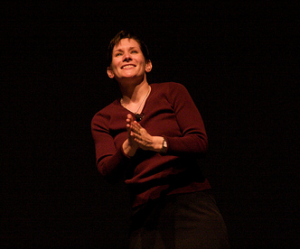
I’m not on Pinterest. I don’t need another internet addiction, and I think it’s a hub of unintentional copyright infringement. Pinterest provides a forum that encourages sharing, and I think it leads to people being so interested in sharing images that they don’t realize that they are violating other people’s copyright rights.
I was recently surprised when I saw that someone got to my law firm’s website by following a link from Pinterest. I traced it back to a board for the ASU Law Solo Network. The person who created the board posted a photo of me from my site with a link to my law firm’s webpage. I know the person who created the board used the picture to promote me and my business and only had good intentions. But she also didn’t consider whether she needed permission to use the photo.
My initial reaction was anger. I’m not on Pinterest, and I don’t want anyone posting any of my work on Pinterest without my permission. I started thinking about what I could do to get it removed, like sending a Digital Millennium Copyright Act takedown notice. That train of thought immediately stopped when I realized, “I don’t own this picture. I don’t get to decide where it’s shown online, and my rights aren’t being violated. I’m getting free publicity out of this, so shut up.â€
I went back and looked up the original photo. It was a photo Sheila Dee took of me at Ignite Phoenix #5. The photo is available on Flickr and it has a Creative Commons license that allows anyone to copy and distribute the photo as long as they don’t alter the image, use it for commercial purposes, and if they give an attribution to Sheila. There’s nothing I can do to stop someone from pinning Sheila’s work on Pinterest. I bet Sheila’s happy that someone is indirectly promoting her by showing her work to others.
So what did I do about this photo on Pinterest? Not much – it’s not my photo and it’s free publicity for Carter Law Firm. I saw that the photo that was pinned didn’t have an attribution to Sheila Dee, so I sent the board owner an email asking her to give an attribution and a link back to the original image on Flickr.
This has been a good reminder to me that I don’t get to control every picture of me. I have no expectation of privacy in anything I do in public and part of that is I don’t have any control over where picture of me in public end up in most cases. And just because I’m not keen on Pinterest, it doesn’t mean that it can’t benefit me.
If you want to know more about copyright issues on Pinterest, check out this video.
Pinterest Spawns Copyright Issues
Please visit my homepage for more Undeniable Ruth.
Feel free to connect with me on Twitter, Google+, Facebook, and LinkedIn.



